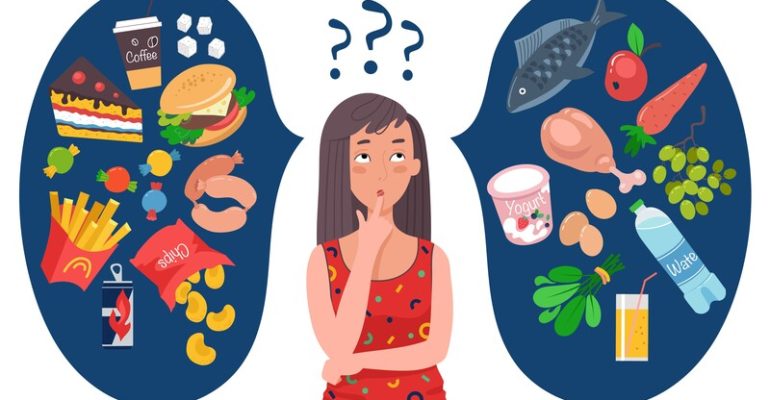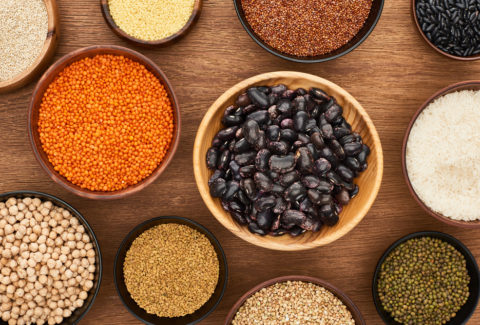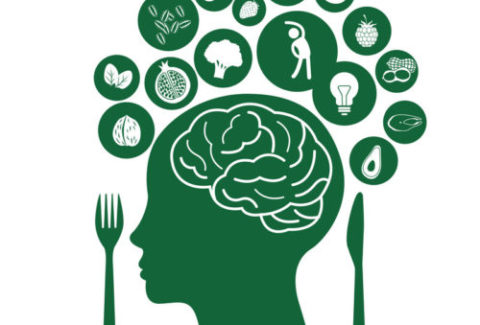The Complex Meaning of Food: Overcoming Barriers to Embrace Hippocrates’ Wisdom

The Complex Meaning of Food: Overcoming Barriers to Embrace Hippocrates’ Wisdom
In our first article of this series, we talked about how Hippocrates, the ancient Greek physician, imparted timeless wisdom when he stated, “Let food be thy medicine and medicine be thy food.” We explained how his profound insight underscores the therapeutic potential of nutrition in promoting overall health and well-being. However, we also said that habit change can be challenging, and when it comes to making changes in eating habits, the modern meaning of food has evolved into a complex web of cultural, social, emotional, and commercial influences[1], which may hinder our patients and clients from fully embracing Hippocrates’ wisdom. In this second article, we explore the factors that contribute to the divergence from this ancient guidance and discuss how we can overcome these barriers to help our patients and clients re-establish the healing power of food in their lives.
Convenience and Fast-paced Lifestyle:
In today’s fast-paced world, convenience often takes precedence over the health benefits of food. Processed and fast foods have become staples in many diets due to their easy accessibility and quick preparation, despite their poor nutritional value.[2] Delayed gratification is not practiced as much; and the focus on convenience may prevent our patients and clients from making more thoughtful and health-conscious food choices.[3]
Emotional Eating and Comfort Food:
Emotional eating[4], seeking solace in food during times of stress or emotional distress, has become prevalent. Comfort foods[5], often high in unhealthy fats, sugars, and salt, may temporarily ease emotional discomfort. This emotional attachment to certain foods can hinder our patients’ ability to view food as a source of nourishment and healing. What do we do, as clinicians? This, we will address in subsequent articles in this series.
Cultural and Social Norms:
Cultural and social norms[6] surrounding food can influence our clients’ eating habits.[7] Traditional dishes, family recipes, and social gatherings often involve rich and indulgent foods that may not align with optimal nutrition[8]. Straying from these norms can be challenging due to the importance of cultural identity and social bonding associated with shared meals. How do we, clinicians, help patients and clients work around this dilemma? This, too, we will address in subsequent articles in this series.
Marketing and Advertising:
The food industry heavily influences our perception of food through marketing and advertising. Highly processed, sugary, and fatty products are often aggressively promoted[9]. This, in turn, makes them appear desirable and enticing. These marketing tactics may overshadow the importance of nutrient-dense and whole foods in our diets. While this is part of a much bigger barrier, we will also be talking about how to help your patients and clients around it.
Disconnection from Food Sources:
Modern food production and distribution systems have created a disconnect between consumers and the sources of their food[10]. Many people are unaware of how their food is grown, processed, and distributed, reducing their appreciation for the quality and nutritional value of their meals. What’s the solution? It starts with psychoeducation and awareness – a crucial point we will be delving into as we move forward.
While we will dedicate specific articles on how to help patients and clients address these barriers, is there anything you can start doing today?
Here are five suggestions:
- Education and Awareness:
You can start promoting nutrition education and raising awareness about the health benefits of whole, nutrient-rich foods[11]. This may help patients empower themselves to make informed choices. Having said that, as a SWEET clinician, you do know that information is not always enough. But this is a start.
- Mindful Eating:
Helping your clients practice mindful eating will encourage them to be present during meals, appreciating the flavors, textures, and nourishment of the food they consume. The ripple effect can be unimaginable.[12]
- Reconnecting with Food Sources:
As a clinician, you can support local and sustainable food systems[13] and help your clients do the same. That may foster a greater understanding of food production and promote a sense of appreciation for fresh, whole foods.
- Cultural Adaptations:
While honoring cultural and social food traditions, there is room for adapting[14] recipes to incorporate healthier ingredients and cooking methods. This may be tricky, as we want to remain culturally humble. How to go about that? More later on this.
- Moderation and Balance:
Encouraging a balanced approach to eating, where indulgences are enjoyed in moderation, can help maintain a healthy relationship with food[15]. Some patients and clients may find this to be very hard. More on this later, as well.
As stated above, embracing Hippocrates’ wisdom of “Let food be thy medicine and medicine be thy food” requires navigating a landscape of diverse meanings and influences surrounding food. By recognizing and overcoming the barriers that prevent our clients from fully embracing the healing power of food, they can transform their relationship with nutrition. Through education, mindfulness, cultural adaptations, and a renewed connection with food sources, we can start to help them rediscover the profound wisdom of Hippocrates, making food not only a source of pleasure and social connection but a true catalyst for healing and optimal well-being. By prioritizing nutrition and understanding the true meaning of food, they can pave the way towards healthier and more fulfilling lives for themselves and future generations.
What’s Next:
- If you have not already done so, explore our ongoing Physical Wellness Certificate Course, where we delve into the role of nutrition in wellness. Our clinician attendees are eager to master this knowledge and integrate it into their work with patients and clients. As per the SWEET Model, experiencing it firsthand as clinicians is crucial, and we will dedicate several weeks to this. Join us for this eye-opening course segment.
- Stay on the lookout for article # 3 in this series, delving deeper into the world of nutrition and its impact on well-being.
- Continue to gather more information on the role of nutrition in overall health and wellness, staying updated with the latest research and recommendations.
- Continue to have more frequent conversations with your clients and patients about nutrition, understanding potential barriers, and helping them overcome obstacles to optimal eating habits.
Remember, as clinicians, having awareness, understanding, insight, and knowledge about nutrition is key to inspiring positive transformations. This series aims to equip you with the essential tools, so you empower yourself and help your patients and clients do the same on their process to optimal well-being.
Until our next article, let us master how to continue our process of discovery and healing through the power of nutrition.
[1] Rozin, Paul. “The integration of biological, social, cultural and psychological influences on food choice.” The psychology of food choice. Wallingford UK: Cabi, 2006. 19-39.
[2] Dave, Jayna M., et al. “Relationship of attitudes toward fast food and frequency of fast‐food intake in adults.” Obesity 17.6 (2009): 1164-1170.
[3] Mulvaney-Day, Norah E., Catherine A. Womack, and Vanessa M. Oddo. “Eating on the run. A qualitative study of health agency and eating behaviors among fast food employees.” Appetite 59.2 (2012): 357-363.
[4] Adriaanse, Marieke A., Denise TD de Ridder, and Catharine Evers. “Emotional eating: eating when emotional or emotional about eating?.” Psychology and Health 26.1 (2011): 23-39.
[5] Evers, Catharine, F. Marijn Stok, and Denise TD de Ridder. “Feeding your feelings: Emotion regulation strategies and emotional eating.” Personality and social psychology bulletin 36.6 (2010): 792-804.
[6] Vartanian, Lenny R., C. Peter Herman, and Brian Wansink. “Are we aware of the external factors that influence our food intake?.” Health Psychology 27.5 (2008): 533.
[7] Enriquez, Jean Pierre, and Juan Carlos Archila-Godinez. “Social and cultural influences on food choices: a review.” Critical Reviews in Food Science and Nutrition 62.13 (2022): 3698-3704.
[8] Nenci, Anna Maria, et al. “Group processes in food choices: The role of ethnic identity and perceived ethnic norms upon intentions to purchase ethnical food products.” Journal of Community & Applied Social Psychology 18.5 (2008): 505-511.
[9] Harris, Jennifer L et al. “Priming effects of television food advertising on eating behavior.” Health psychology : official journal of the Division of Health Psychology, American Psychological Association vol. 28,4 (2009): 404-13. doi:10.1037/a0014399
[10] Tsakiridou, Efthimia, Konstadinos Mattas, and Zoi Mpletsa. “Consumers’ food choices for specific quality food products.” Journal of Food Products Marketing 15.3 (2009): 200-212.
[11] Adams, Kelly M., et al. “Nutrition in medicine: nutrition education for medical students and residents.” Nutrition in Clinical Practice 25.5 (2010): 471-480.
[12] Warren, Janet M., Nicola Smith, and Margaret Ashwell. “A structured literature review on the role of mindfulness, mindful eating and intuitive eating in changing eating behaviours: effectiveness and associated potential mechanisms.” Nutrition research reviews 30.2 (2017): 272-283.
[13] Lindgren, Elisabet, et al. “Sustainable food systems—a health perspective.” Sustainability science 13 (2018): 1505-1517.
[14] Cunha, Luís Miguel, et al. “Application of the Food Choice Questionnaire across cultures: Systematic review of cross-cultural and single country studies.” Food quality and preference 64 (2018): 21-36.
[15] Verhoog, Sanne, Pedro Marques-Vidal, and Oscar H. Franco. “Nutritional epidemiology, extinction or evolution? It is all about balance and moderation.” European journal of epidemiology 34 (2019): 333-335.








